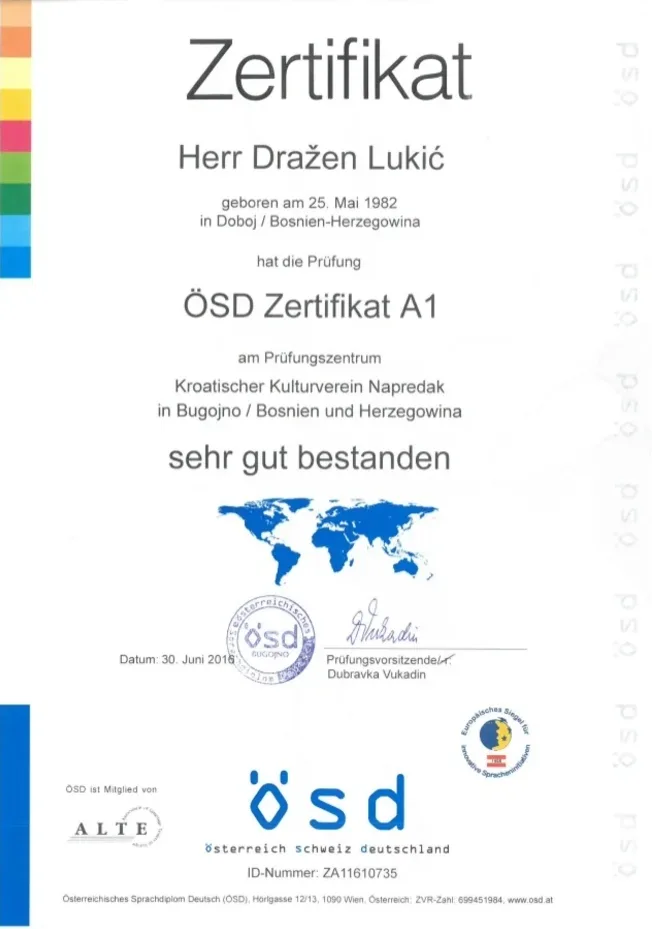Understanding the ÖSD Certificate: Your Gateway to German Proficiency
In an increasingly globalized world, efficiency in numerous languages is an important asset. For those interested in the German language, the ÖSD (Österreichisches Sprachdiplom) certificate stands out as a recognized qualification. This post explores what the ÖSD certificate is, its significance, the structure of the exams, preparation pointers, and responses to often asked concerns.
What is the ÖSD Certificate?
The ÖSD certificate is a main language certificate provided by the Österreichisches Sprachdiplom Deutsch, or the Austrian Language Diploma in German. It evaluates the language proficiency of non-native speakers and complies with the Common European Framework of Reference for Languages (CEFR). The ÖSD accredits language abilities varying from A1 (novice) to C2 (proficient), covering four key competencies: reading, writing, listening, and speaking.
Value of the ÖSD Certificate
Getting an ÖSD certificate holds significance for different factors:
Educational Opportunities: Many universities and instructional organizations in German-speaking nations require evidence of German language efficiency for admission. The ÖSD certificate works as legitimate proof of a prospect's language skills.
Employment Prospects: In a competitive task market, a recognized language certificate can improve a candidate's employability, especially in roles needing German as a primary language.
Migration Requirements: Some immigration procedures in German-speaking nations demand language efficiency certificates. The ÖSD is commonly accepted by different authorities, making it a crucial property for those relocating to Austria or Germany.
Structured Learning: Preparing for the ÖSD certificate motivates students to develop a well-rounded understanding of the language, assisting in both academic and daily communication.
Structure of the ÖSD Exam
The ÖSD certificate incorporates various levels of assessment, lining up with the CEFR. The evaluation structure includes the following elements:
Levels Offered:
A1: Beginner
A2: Elementary
B1: Intermediate
B2: Upper Intermediate
C1: Advanced
C2: Proficient
Parts of the Exam:
The ÖSD examinations are designed to examine the following language abilities:
Listening Comprehension: Candidates listen to audio excerpts and respond to questions to demonstrate understanding.
Checking out Comprehension: This includes reading passages and responding to concerns to reveal analysis and understanding.
Writing: Test-takers participate in composed tasks, such as making up letters or essays, to show their capability to articulate thoughts on paper.
Speaking: In this area, candidates take part in dialogues or monologues, showcasing their spoken interaction abilities.
Exam Format:
Tests can take different formats, consisting of:
Paper-based: Traditional examinations undertaken in person at designated testing centers.
Computer-based: Digital examinations available in some locations, using flexibility and benefit.
Getting ready for the ÖSD Exam
Preparation for the ÖSD certificate requires a structured method. Here are some reliable strategies:
Setting Up a Study Plan:
Evaluate Your Level: Determine your present proficiency level through practice tests.
Set Goals: Establish clear, achievable objectives for each language ability (listening, reading, writing, speaking).
Daily Practice: Allocate time every day for language study and practice various skills to develop a detailed command of German.
Resources for Study:
Language Courses: Consider registering in language courses, either in-person or online, specifically developed for ÖSD preparation.
ösd materialien and Workbooks: Utilize materials that line up with the CEFR levels and cover all 4 proficiencies.
Online Platforms: Websites, apps, and online forums offer interactive workouts and neighborhood assistance.
Sample Exams: Familiarize yourself with the test format by experimenting sample questions and previous exams.
Engaging with German:
Immerse Yourself: Surround yourself with the language through music, films, and podcasts.
Language Exchange: Partner with native speakers or classmates to practice conversational skills.

Join Study Groups: Collaborating with peers can cultivate a supportive knowing environment and enhance motivation.
Frequently Asked Questions (FAQs).
1. The length of time does the ÖSD certificate stay valid?
The ÖSD certificate does not have an expiration date, however prospects are recommended to update their abilities occasionally, specifically for expert or scholastic purposes.
2. Where can I take the ÖSD exam?
The ÖSD examinations are administered at various qualified evaluation centers worldwide. A list of locations can normally be discovered on the official ÖSD site.
3. Just how much does the ÖSD exam expense?
Exam costs vary by place and level. It is a good idea to talk to local testing centers for precise pricing.
4. Can I retake the ÖSD exam if I do not pass?
Yes, candidates can retake the exam as often times as essential to attain their preferred efficiency level.
5. Exist specific research study materials advised for the ÖSD certificate?
While no official products are mandated, it is beneficial to utilize books tailored to language efficiency examinations and undertake practice tests.
Conclusion.
The ÖSD certificate works as a trustworthy benchmark of German language efficiency, opening doors to instructional, professional, and migration chances. With a well-structured preparation technique, dedicated practice, and the right resources, aspiring prospects can enhance their language skills and embark on a successful journey in mastering the German language. Whether for career development or personal enrichment, the ÖSD certificate represents a significant action towards becoming skilled in German.
